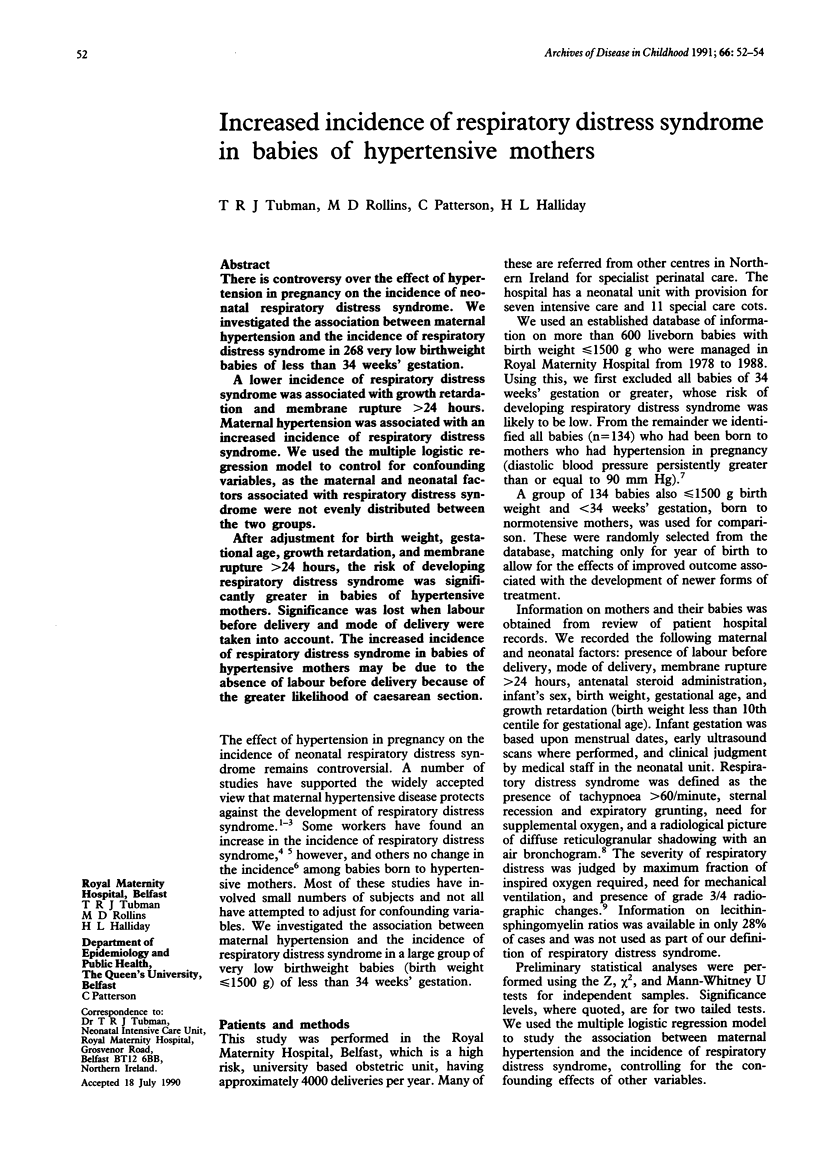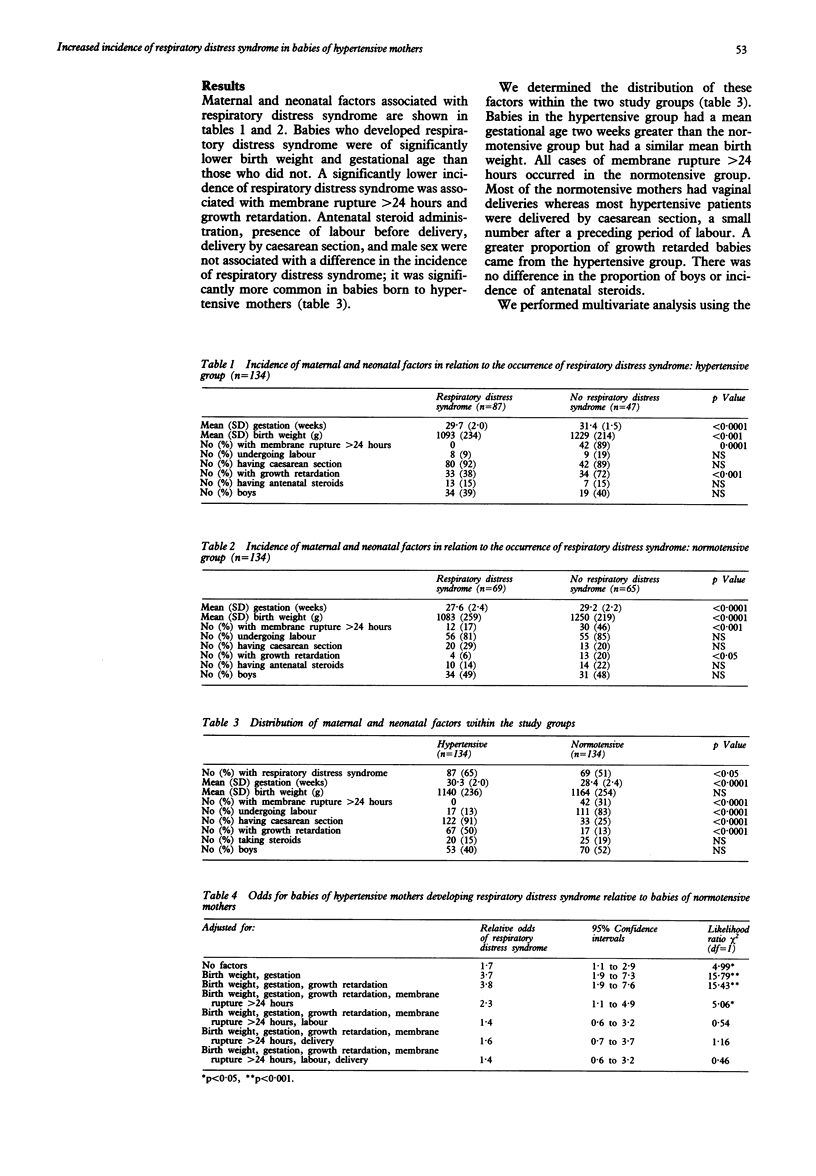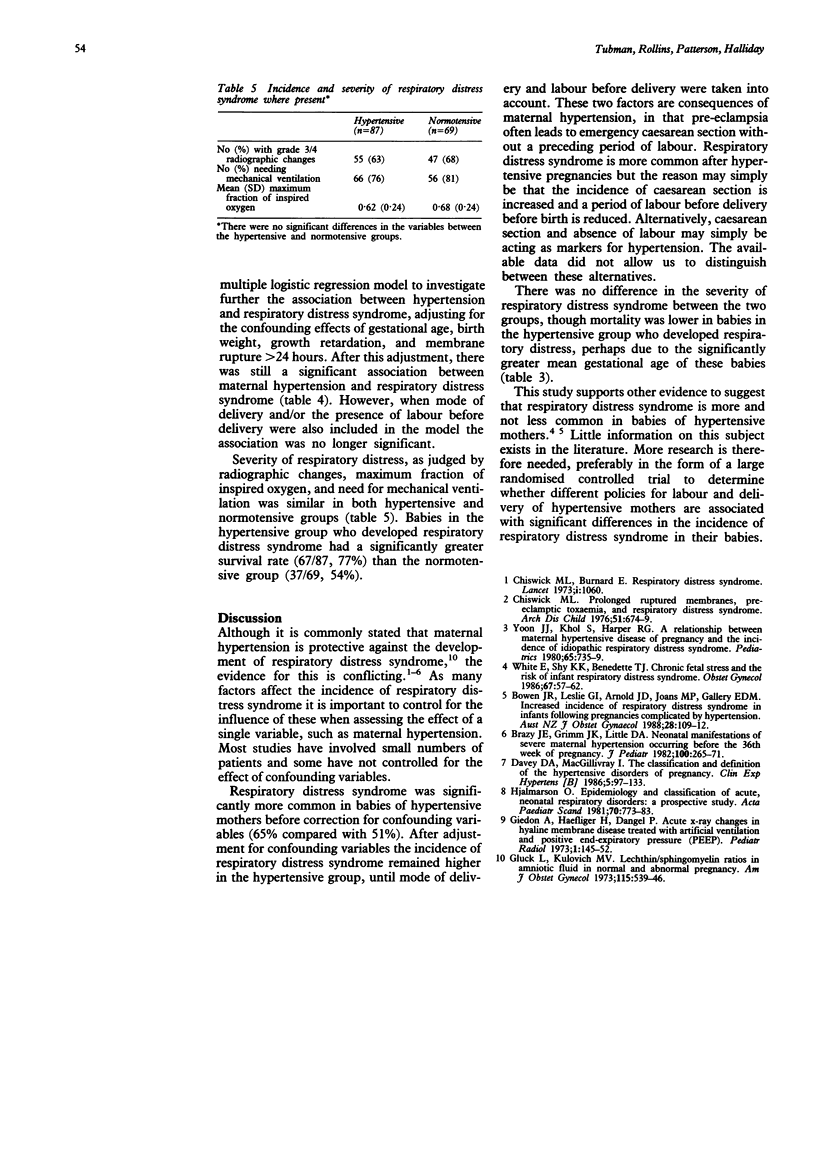Abstract
There is controversy over the effect of hypertension in pregnancy on the incidence of neonatal respiratory distress syndrome. We investigated the association between maternal hypertension and the incidence of respiratory distress syndrome in 268 very low birthweight babies of less than 34 weeks' gestation. A lower incidence of respiratory distress syndrome was associated with growth retardation and membrane rupture greater than 24 hours. Maternal hypertension was associated with an increased incidence of respiratory distress syndrome. We used the multiple logistic regression model to control for confounding variables, as the maternal and neonatal factors associated with respiratory distress syndrome were not evenly distributed between the two groups. After adjustment for birth weight, gestational age, growth retardation, and membrane rupture greater than 24 hours, the risk of developing respiratory distress syndrome was significantly greater in babies of hypertensive mothers. Significance was lost when labour before delivery and mode of delivery were taken into account. The increased incidence of respiratory distress syndrome in babies of hypertensive mothers may be due to the absence of labour before delivery because of the greater likelihood of caesarean section.
Full text
PDF


Selected References
These references are in PubMed. This may not be the complete list of references from this article.
- Bowen J. R., Leslie G. I., Arnold J. D., Jones M. P., Gallery E. D. Increased incidence of respiratory distress syndrome in infants following pregnancies complicated by hypertension. Aust N Z J Obstet Gynaecol. 1988 May;28(2):109–112. doi: 10.1111/j.1479-828x.1988.tb01635.x. [DOI] [PubMed] [Google Scholar]
- Brazy J. E., Grimm J. K., Little V. A. Neonatal manifestations of severe maternal hypertension occurring before the thirty-sixth week of pregnancy. J Pediatr. 1982 Feb;100(2):265–271. doi: 10.1016/s0022-3476(82)80653-7. [DOI] [PubMed] [Google Scholar]
- Chiswick M. L. Prolonged rupture of membranes, pre-eclamptic toxaemia, and respiratory distress syndrome. Arch Dis Child. 1976 Sep;51(9):674–679. doi: 10.1136/adc.51.9.674. [DOI] [PMC free article] [PubMed] [Google Scholar]
- Giedion A., Haefliger H., Dangel P. Acute pulmonary X-ray changes in hyaline membrane disease treated with artificial ventilation and positive end-expiratory pressure (PEP). Pediatr Radiol. 1973 Oct;1(3):145–152. doi: 10.1007/BF00974058. [DOI] [PubMed] [Google Scholar]
- Gluck L., Kulovich M. V. Lecithin-sphingomyelin ratios in amniotic fluid in normal and abnormal pregnancy. Am J Obstet Gynecol. 1973 Feb 15;115(4):539–546. doi: 10.1016/0002-9378(73)90404-3. [DOI] [PubMed] [Google Scholar]
- Hjalmarson O. Epidemiology and classification of acute, neonatal respiratory disorders. A prospective study. Acta Paediatr Scand. 1981 Nov;70(6):773–783. doi: 10.1111/j.1651-2227.1981.tb06228.x. [DOI] [PubMed] [Google Scholar]
- Respiratory-distress syndrome. Lancet. 1973 May 12;1(7811):1060–1061. [PubMed] [Google Scholar]
- White E., Shy K. K., Benedetti T. J. Chronic fetal stress and the risk of infant respiratory distress syndrome. Obstet Gynecol. 1986 Jan;67(1):57–62. [PubMed] [Google Scholar]
- Yoon J. J., Kohl S., Harper R. G. The relationship between maternal hypertensive disease of pregnancy and the incidence of idiopathic respiratory distress syndrome. Pediatrics. 1980 Apr;65(4):735–739. [PubMed] [Google Scholar]


